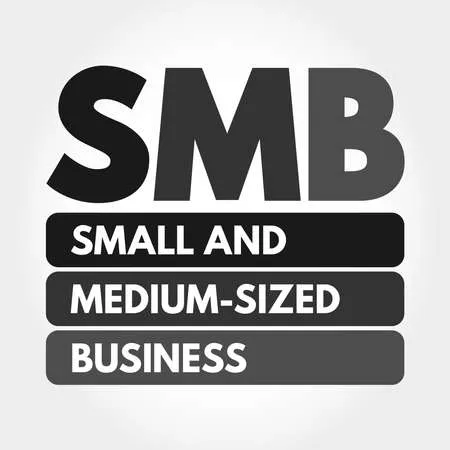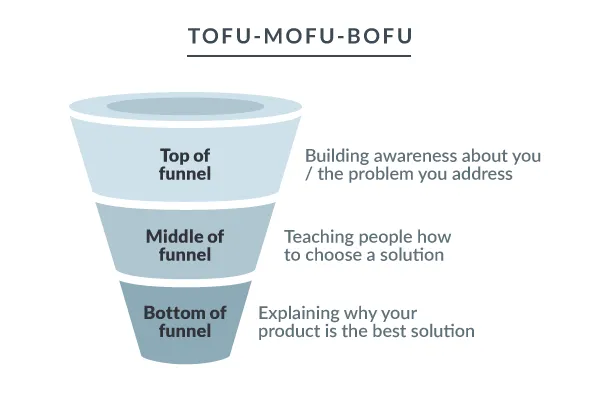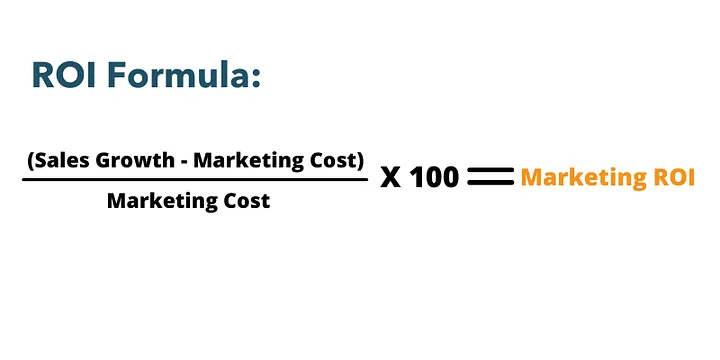Is your business, by any chance, a B2B SaaS catering to various industries? Have you reached that stage where your conversion volume isn’t increasing (or it does, but your costs skyrocket), and you’re stuck needing solutions to scale without sacrificing quality?
Well, this is the reality for many startups looking to grow healthily and, in general, in a controlled manner.
One of the things you can do in this situation is to improve your acquisition funnel to optimize the current results of your marketing team.
But how can we do that?
There are some strategies, more focused on performance and paid media, that over the years I’ve had the opportunity to experience and unlock these types of situations. And here, I want to share some of them with you.

In many businesses, we know that the SMB audience ensures the highest volume of conversions and acquisitions for the company. And, needless to say, this is what ensures that businesses will continue to grow month after month.
But what is the SMB Audience?
Many say that the SMB audience is basically “anyone” who has started a business or is in the early stages of their own business.
Furthermore, the profile of an SMB is usually the business owner who ends up doing everything within the company. They handle purchases, finances, HR, people management, business growth, and so on.
So, in theory, it wouldn’t be so difficult to find and connect with this audience.
But this is where SaaS Startups often go wrong. If your target audience is the person who does everything, when will they find time to search and perhaps come across one of your paid campaigns claiming that your product will solve their problems?
The SMB target audience is usually responsible for so many aspects of their business that they often don’t have time to look for a system or software that can help them save time, reduce workloads, increase daily productivity, and consequently focus solely on the company’s growth.
And that’s exactly what Marketing teams need to understand to act quickly and accurately.
Here, I bring you 8 Effective Marketing Strategies to Improve Your SMB Acquisition:
1) What Is The Primary Segmentation That Your Business Serves?
Do you understand your product? Can you explain it so well that even a 10-year-old child would understand?
If yes, then you know exactly who your product is for. And who is the primary audience most prepared to buy what you have to offer?
With that in mind, you are already ahead in improving and optimizing your acquisition results.
Usually, SaaS companies end up serving a large portion of the market, whether it’s industries, segmented markets, agencies, specific purchasing sectors, public relations, roles, and so on.
But which of them has the best fit with your product?
Analyze your annual results by looking at your business’s Ideal Customer Profile (ICP). Which audiences brought in the most revenue? And which audiences converted well without spending much?
There’s no use in wanting to run campaigns for all audiences, with a small budget or even using that small budget for more “open” campaigns. In the end, all these actions will be quite generic, and you will end up bringing in people who do not convert or take much longer to convert in your funnel.
With these two questions answered well above, you will have a guide to optimize your marketing campaigns and will have taken a big step in improving your SMB acquisition.
2) What Are The Key Functionalities Of Your Product For This Specific Audience?
Once you know which audience has the greatest scalability opportunity, it’s time to look at the features of your product that best cater to this audience.
Sometimes your target audience needs a specific feature that will help save hours of manual work.
Or it’s a feature that provides a comprehensive survey of customer numbers and presents it in excellent dashboards and graphs.
Or perhaps your product helps centralize various pieces of information in one place, bringing more clarity and organization to the SMB client.
Whatever the key features of your product for this specific audience, know how to highlight them within your product, with an excellent user experience. This ensures that when a lead tests your product, they see that it truly delivers immense value to their business. And that, in the long run, will make all the difference in scaling your marketing results.
3) How Do You Find, Speak To, And Connect With Your Target Audience?
As I mentioned earlier, the SMB audience is the entrepreneur who often performs many roles within their own business.
So, how do you find this audience?
What do they like to do in their free time? Which websites do they visit for information? Do they enjoy listening to podcasts? Do they watch content on YouTube? Do they spend time on social media?
And how do they communicate? What are the slang terms used in this market? What are the catchphrases of this audience?
Certainly, your company/startup has already conducted this persona study a long time ago. However, it’s always worth revisiting this information and analyzing if all of it still makes sense in today’s context.
The market is constantly updating, and access to information is becoming more practical and fast.
Therefore, you must know where your audience is and what they are doing there. This will enable you to penetrate these areas more easily and consequently connect naturally with this audience.
4) How Do You Capture The Attention Of This Audience By Delivering Significant Value?
Up to this point, you’ve gathered a lot of information. Now is the time to take action to attract this audience. This is where your Marketing Team’s Top of the Funnel Campaigns come in.
Let’s assume that your target audience is accounting offices and, consequently, accountants.
Here, I won’t go into the details of how to develop paid campaigns that capture your audience’s attention, whether on social media, blogs, portals, videos, or display networks.
Instead, let’s focus on how you can provide a lot of value without asking for anything in return.
Top of the Funnel campaigns have precisely this objective. You’ll develop some form of “digital bait” to “catch” this lead, and in return, they might offer you a Name, a Corporate Email, and maybe, but just maybe, the Number of employees in the company.
And what are these “digital baits”?
They are typically called rich materials, which can range from an E-book (yes, I guarantee people still download e-books, and a lot), Templates, and Spreadsheets, to even Video Lessons / Free Lessons / Masterclasses / Webinars on a specific topic.
In the case of our example target audience, it would be interesting, for instance, to create a Tax Calculator or an Asset Management Spreadsheet. Another example concerning video content, this digital bait could be a snippet from a video already produced by your Marketing team, and you could label it as “Free Lesson on…”.
This somewhat brings a more professional touch and highlights that this qualified content is free, which, in the end, will generate a lot of value for your lead.
In return, as I mentioned, you have this person’s email to later run targeted Remarketing campaigns, which are much more effective than the generic campaigns your business was running before.
5) How Can You Deliver Even More Value to This Audience?
Maybe you’re not aware of the importance of delivering genuine value to your lead.
Firstly, your business will gain more credibility with this audience. Nowadays, nothing is sold on the internet without having genuine trust.
To strengthen the brand and build credibility for the business, you need to instill confidence in your audience. Building confidence online is nothing more than having authority on a subject and creating connections with the target audience.
In other words, establish authority for your brand through content of extreme value, and thereby generate genuine connections between your business and your target audience.
Secondly, by delivering true value to a lead, they will recommend your business to another lead, and so on. These leads that come in tend to become the true loyal customers of your business in the future.
With that said, you will “reuse” this audience from digital baits for traffic campaigns to your blog. Now that you know your audience’s true pain points, and the audience itself has discovered how to solve these pain points, you must provide them with relevant information to convey the credibility of your business that we discussed above.
Direct this audience to your posts that align with these pain points. Create email marketing workflows that will send out content at the right time to educate this audience and make them even more aware of what they need to “do,” or better, “hire” to solve their problems.
6) It’s Time For Bottom Of The Funnel Campaigns

With this target audience in your hands, now your marketing team should produce sponsored campaigns that are segmented and specific to this audience.
Ensure that your campaign speaks to this audience that has already been impacted before, and has the right communication/copy to convert this lead into a potential business.
Also, ensure landing pages with the right message. No generic copy here.
You need to convey confidence that your business is truly what your lead needs. Whether it’s for the SMB to scale, be more productive, have more time, and have fewer headaches.
Furthermore, it’s interesting to test different offers. For example, test a landing page where the main offer is a Free Trial for 7 Days so that the lead can draw their conclusions if it’s exactly what they were looking for.
On another landing page, test offering a Free Consultation for the SMB, where your sales team will get in touch to address objections and provide a guided tour of the product to show exactly what the lead needs.
In addition, Remarketing Campaigns allow us to test various other things, such as the lead’s flow on the landing page, the landing page form, the thank you page, and the contact between your company and the lead’s company, not to mention the ads, videos, and images of your campaign.
Analyze and optimize these points to bring a precise experience to your future customers.
7) Understand Your ROI

Now that you have built and organized this acquisition funnel, it’s time to reassess which audiences have brought the best results for your business.
Compare it with months ago, or years ago, and look at the conversion rates and costs of the main target audiences of your company.
Which audience brought the best results? Which audience paid off without significant effort? Which audience brought the highest profit to the business? Which audience costs more money and time to convert? And why?
Analyze and thoroughly understand these points to move on to the next step.
8) Repeat
With a more macro perspective and all the answers at your fingertips, you now know what to do and how to do it.
So, repeat the processes above so that your business can invest more time and money in what has really brought great results to the company until today.
Additionally, what is interesting to add now that you have completed the previous 7 steps is to enhance your strategy by incorporating social proof and testimonials from past leads. This will help build the credibility of your business, show the target audience that YES, your product is for this specific audience, and that its features are exactly what they are looking for to scale their SMB Businesses.
Conclusion
In the end, it’s all about taking a Zoom Out, analyzing the information you already have in hand, planning how to tackle it, and voilà. Your business has everything to return to excellent conversion rates and improve its acquisition as a whole.
Tell me, what do you like to do as part of your Marketing Strategy to increase SMB acquisition?
Feel free to give me feedback and share insights about the content I create.
Don’t forget to subscribe to my newsletter here on Medium to receive exclusive content on performance, paid media, productivity, creativity, marketing as a whole, and some geeky stuff.
Thank you for reading this far.
See you next time. 😀




